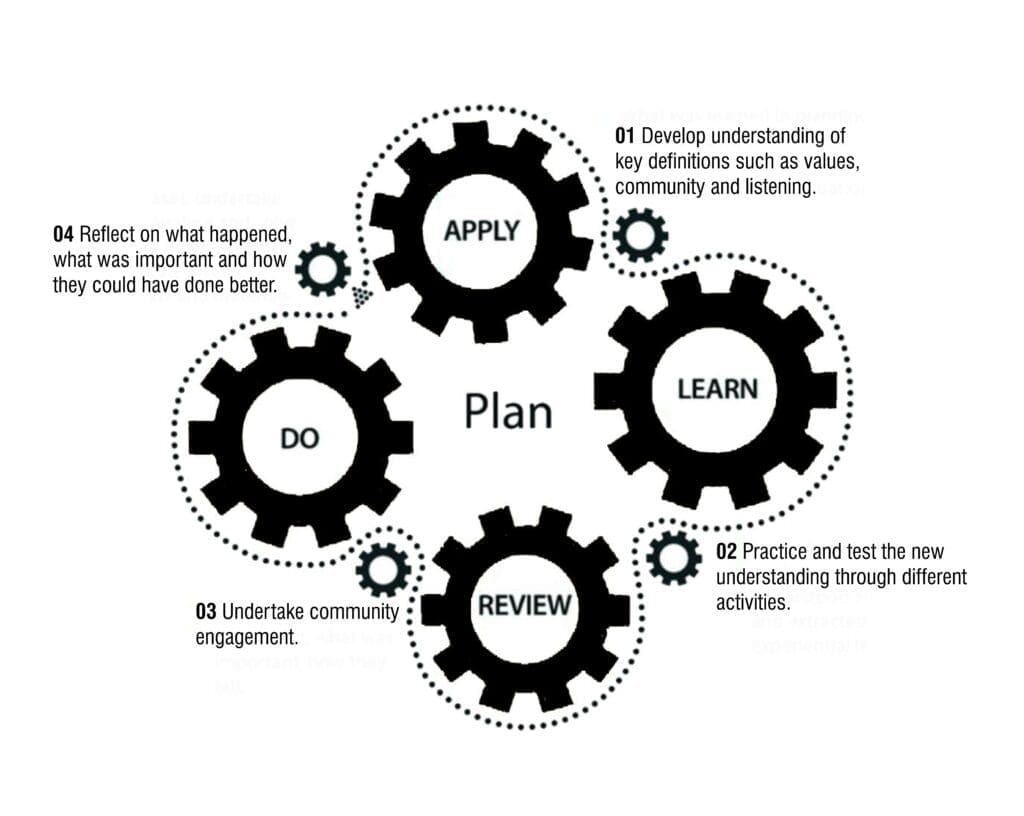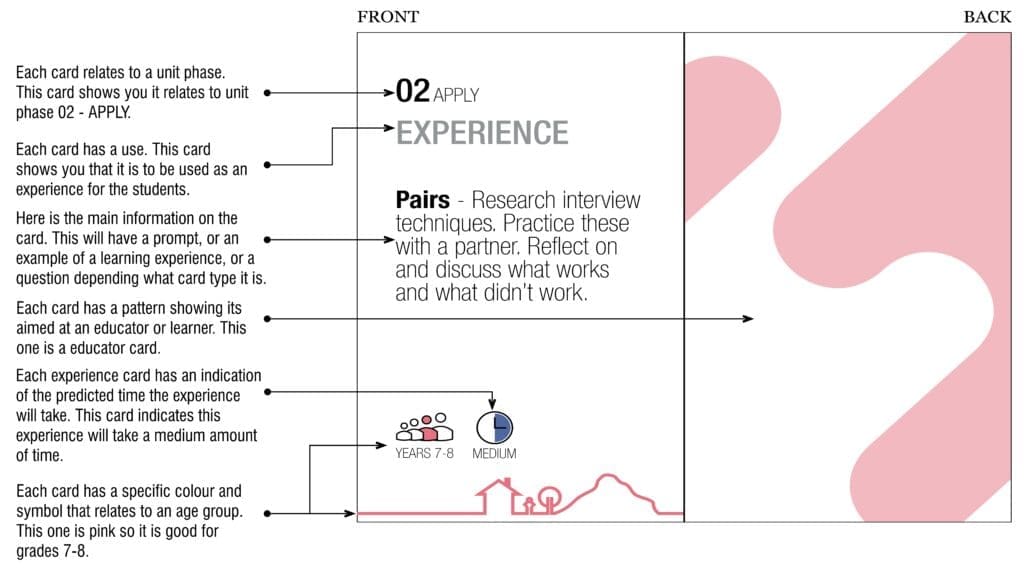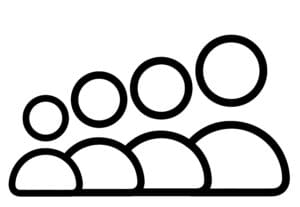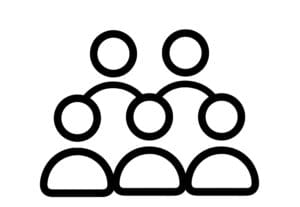Nau mai, haere mai. Welcome to the Community section of the Authentic Engagement Toolkit.
We are so glad you’re here.
The overarching objective of all groups in Mayfield 2023 was to create a set of tools that support and facilitate authentic listening, in order to promote genuine JEDI outcomes for all in learning environments. We are a group of educators, designers and policy makers who have dedicated the last few months exploring how we can genuinely listen to and build relationships with the community which surround our schools.

Our tool is to be used to help develop a unit plan or module within the academic year by providing a dedicated space for unique learning experiences and fostering relationships with the schools local community.
By using the tools on this page you will enable learners in your school to explore local community values, desires and requirements through authentic listening to the members of your local community. The goal is for students to gain a deeper understanding of the people who surround them, including what makes it unique and what it needs. The learners will be responsible for planning, conducting interviews, and presenting their findings to their own neighbourhood.
To get you started on your journey, we have developed a set of Reflective Prompts that can be used to guide conversations and learning objectives throughout your unit of work.
Community | Reflective Prompts
Authentic Engagement Toolkit
Key questions to answer during each unit phase which outline the intended purpose and outcome of a learning experience in order to determine the communities values, desires and requirements.
Click on the button below to use the cards online
Or
Unit Plan Exemplars
We have created supporting planning documentation to help you use these cards as part of your regular school class.
New Zealand
This unit plan is for teachers based in New Zealand who want to use these resources to engage with their local community and link learning back to the curriculum.
Australia
The resource below will help teachers in Australia to map their Unit Plan to the Australian Curriculum and incorporate this unit into their regular school programs.
What resources can you use with your students?
The other tools were developed to support learners to engage directly with the community. The cards in the tools can be used across four different year-level bands; Foundation to Year 3, Year 4 to Year 6, Year 7 to Year 8, and Year 9 to Year 10.
We wanted to give educators the ability to define or tweak their unit plans to suit their particular learners’ needs, therefore the unit plan and resource card in the tools are split into these four bands. In order to establish the communities values, desires and needs effectively we have provided two sets of cards for the educator to utilise: Learning Experiences and Interview Questions. Explore the tools below.
Community | Learning Experiences
Authentic Engagement Toolkit
Examples of optional learning experiences which can achieve the prompts. These are split into different ages of learners and phases of the unit. The activities vary in time and group size to suit each experience.
Click on the buttons below to use the cards online
Or
“Conversation is the most basic community development tool we possess. Conversation has always been the fundamental community building process we have used to share knowledge and ideas. When you have a conversation with another person or a group of people, you listen closely and respond appropriately, so that your conversation is a true exchange of ideas, not just people waiting for their turn to talk. A good conversation makes you feel heard, satisfied, and more informed.”
Bank of I.D.E.A.S
Community | Interview Questions
Authentic Engagement Toolkit
Examples of optional interview questions which can be used for interviews with a community member to determine their values, desires and requirements. These are also split into the different ages of learners and can be amended to suit the learners.
Click on the buttons below to use the cards online
Or
How The Cards Work

Who can use this tool?
The tool is flexible and adaptable for any age/stage of learner at school. It provides examples of learning experiences for each age with flexibility for teachers to adapt to suit their learner needs. However, this tool could be adapted for adult learners by using the Stage 9-10 cards.

Variety
Cards in sets for Stage 0-3, 4-6, 7-8 and 9-10

Flexible
Experiences for individuals, pairs and groups

Adaptable
To suit your national curriculum requirements
Where can this tool be used?
This tool can be implemented at any time – whether that’s to connect when a neighbourhood is feeling distant, or when a design project is about to start or even when you want to discover how your school’s current infrastructure can meet the needs of those around you.

Designing
At the start of a new building project

Connecting
Reestablishing the school within the community

Learning
Intergenerational learning, identifying local skills and needs within the community
Interested in learning more about the Community Tool from the Authentic Engagement Toolkit? Find the answers below.


